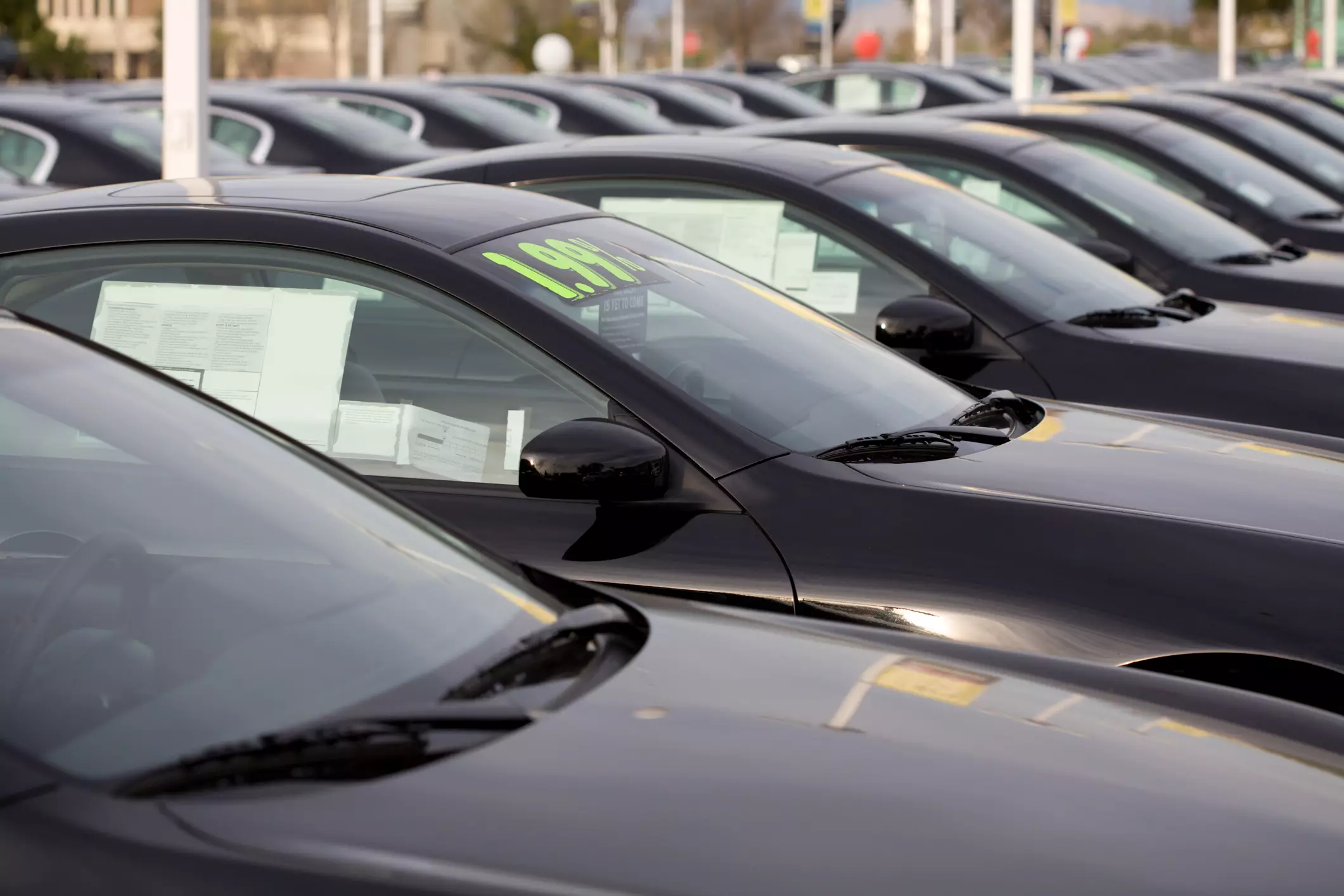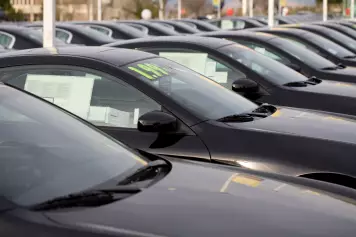Aggressive behaviors in driving are a dangerous and widespread problem that jeopardizes everyone on the road. The legal definition of aggressive driving is often a combination of moving violations committed recklessly, leading to accidents, injuries, and even fatalities.
The National Highway Traffic Safety Administration emphasizes the broader impact of aggressive behaviors on other drivers, pedestrians, and bicyclists sharing the road.
As traffic congestion increases and daily pressures mount, the problem of reckless driving is likely to worsen unless addressed proactively. According to the 2022 Traffic Safety Culture Index, this is a pressing concern, with almost 9 out of 10 drivers acknowledging the dangers of dangerous driving.
To make roads safer, it is essential to understand why people drive aggressively, recognize the warning signs, and create a safer road environment for everyone.
What Is the Definition of Aggressive Driving?
AAA Foundation for Traffic Safety defines aggressive driving as a dangerous pattern of unsafe driving behaviors that are performed deliberately with little regard for traffic laws and the safety of fellow motorists and pedestrians.
Aggressive behaviors can be categorized into three types of behavior:
- Minor aggression: Includes actions like gesturing, honking, or yelling at other drivers.
- Aggressive violation: Involves using the vehicle itself as a weapon, such as tailgating or weaving through traffic.
- Road rage: Leads to physical assault or property damage.
According to the Governors Highway Safety Association, aggressive actions in driving is a serious issue that 15 state legislatures have addressed.
The legal consequences of these driving behaviors vary depending on the state, with drivers potentially facing fines, points on their license, license suspension, or even jail time.
What Is the Root of Aggressive Driving?
The root of aggressive behaviors in driving is complex, often stemming from a combination of psychological, environmental, and societal factors.
A 2009 study found that driving aggressively is a "contextual violation" triggered by an individual's mental state and current surroundings. Psychological phenomena like stress, frustration, fatigue, or even pre-existing anger can easily manifest on the road, which can lead to impulsive, aggressive behavior.
Traffic conditions exacerbate these psychological triggers. Long commutes and road congestion create a breeding ground for frustration and impatience.
In a thesis exploring psychosocial factors that influence aggressive behavior, 15% of young drivers report noticing a rise in both the number of vehicles on the road and the overall pace of life, leading to increased frustration while driving.
Additionally, societal norms, cultural expectations, and peer influence can encourage aggressive behaviors. If such actions are viewed as acceptable or even encouraged within a specific social group or culture, individuals may be more inclined to engage in them.
The same research indicates that the presence of peers increases the likelihood of risky driving behaviors by up to 50%.
Examples of Aggressive Driving
Driving aggressively includes a wide range of actions, such as:
- Excessive honking: Repeatedly honking the horn in anger or frustration.
- Parking space disputes: Claiming a parking space that someone else is waiting for.
- Obstruction of traffic: Blocking other cars from passing or changing lanes.
- Verbal or gestural aggression: Making rude gestures or shouting at other drivers.
- Speeding and tailgating: Driving at excessive speeds and following other vehicles too closely.
- Unsafe lane changes: Weaving in and out of traffic lanes without proper signaling or regard for other vehicles.
- Sudden braking: Abruptly stopping to intimidate or punish other drivers.
- Cutting off: Merging into lanes without yielding or leaving sufficient space.
- Disregarding traffic signals: Running red lights or ignoring stop signs.
Aggressive actions in driving are a serious issue with potentially severe consequences, both legally and in terms of safety. Understanding its root causes (mentioned earlier) is a vital step in addressing and preventing this dangerous behavior.
The Consequences of Aggressive Driving

A staggering 55.7% of fatal crashes involve aggressive behaviors while driving, such as speeding, tailgating, and erratic lane changes, drastically increasing the risk of accidents and placing everyone on the road in danger. Speeding alone played a part in nearly a third of all traffic deaths in 2022.
Alarmingly, 89% of drivers admit to participating in such behaviors, which makes aggressive driving even more deadly than drunk driving. It is estimated that 33% of fatalities associated with major accidents are caused by driving aggressively.
The legal and economic implications are equally significant. Depending on the severity of the offense and local regulations, aggressive drivers could face hefty fines, license suspension, or even incarceration.
In Indiana, the maximum penalty is a $5,000 fine and up to one year in jail. In Delaware, the fine ranges from $100 to $300, with a possible incarceration of 10 to 30 days. Additionally, a 30-day license suspension may be imposed.
A dangerous driving charge is a criminal conviction that can skyrocket your insurance premium, potentially increasing it by hundreds or even thousands.
Even minor traffic convictions, like speeding or improper lane changes, contribute to higher insurance costs. Depending on the number of offenses, these surcharges can range from 5% to 20%. The increased cost of insurance can last several years, adding a significant financial burden to the consequences of aggressive driving.
Aggressive Driving vs. Reckless Driving
While aggressive driving and reckless driving may seem similar, they are distinct in both definition and legal consequences.
- Aggressive driving typically refers to a pattern of hostile behavior behind the wheel, such as tailgating, speeding, or improper lane changes, often as a result of frustration or impatience. It is generally seen as a traffic offense, with penalties varying based on the severity of the actions.
- Reckless driving, on the other hand, involves willfully disregarding traffic laws and the safety of others, often with more dangerous consequences. This could include driving at excessive speeds or running red lights with no regard for potential harm. Reckless driving is usually considered a more serious offense and can result in harsher penalties, including fines, license suspension, or even jail time.
How To Avoid Aggressive Driving
Safe driving requires managing your emotions, especially in heavy traffic. These defensive driving techniques can help you avoid aggressive driving:
- Plan ahead: Choose routes and allow enough travel time to minimize stress.
- Maintain distance: Keep a safe following distance to avoid tailgating and collisions.
- Signal clearly: Use turn signals consistently to communicate your intentions.
- Avoid confrontation: Don't engage with aggressive drivers; prioritize your safety.
- Yield when necessary: Cooperate with other drivers, even if it means yielding the right of way.
Aggressive behaviors in driving often stem from heightened emotions. Recognizing triggers and practicing mindfulness are essential.
Before even starting your car, acknowledge your emotional state. If you're feeling stressed, angry, or rushed, it may be wise to delay your trip or find alternative ways to manage those emotions.
Additionally, reflecting on situations that typically provoke anger or frustration while driving allows you to identify your personal triggers. You can then perform proactive measures to address them, such as leaving earlier to avoid traffic or taking alternate routes.
Finally, incorporating mindfulness techniques, like deep breathing or meditation, into your driving routine can help you maintain a calm and focused mindset, even in challenging situations.








![Best Sites to Check a Car’s History [2025 Review]](https://media.infopay.net/thumbnails/K8lMeG2QLjE46LPqZlmoi6SunKKdT5qvlaRZk6e1.webp)










![Best Sites to Check a Car’s History [2025 Review]](https://media.infopay.net/thumbnails/K8lMeG2QLjE46LPqZlmoi6SunKKdT5qvlaRZk6e1-w356.webp)
